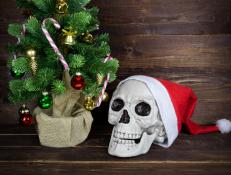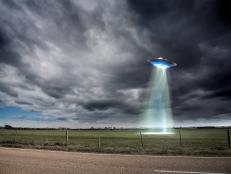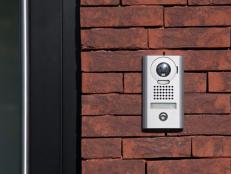How to Survive an Avalanche
Avalanche experts talk with the Travel Channel about how you can stay safe in the backcountry this winter.


Matthew Inden
On average, 27 people die annually in U.S. avalanches, according to Colorado Avalanche Information Center data. Canada sees an average of 15 avalanche deaths. Asphyxiation is the leading cause of death, followed by blunt force trauma. Hundreds more are injured from tumbling in avalanches, twisting knees or hitting debris, rocks or trees. Even more than that emerge unscathed, shaken but with an incredible story to tell and lessons learned. As more people push backcountry boundaries on skis, snowboards, split boards and snowmobiles, avalanche awareness is more critical than ever, says Dr. Karl Birkeland, Director of the Forest Service National Avalanche Center.
“We’re seeing a dramatic increase in the number of people going into the backcountry,” Birkeland says. “Fortunately, we’re not seeing an increase in fatalities. I think better educational resources, avalanche advisories and safety gear are the reason.”
Non-profit organizations such as the Utah Avalanche Center focus on educating the public about backcountry dangers and how to avoid them, and are credited with keeping statistics from rising. As more people take up winter mountain sports, avalanche safety organizations work to get their messages out.
Know Before You Go from Trent Meisenheimer on Vimeo.
The kind of avalanche that causes the most injuries and death are called slab avalanches during which a thick, top layer of snow shatters like a pane of glass and slides in plates. Victims often trigger these avalanches and find themselves riding a slab until it begins to break up into a jumble of chunks, powder and debris that can suck the victim under and bury them, Birkeland says. Avalanches occur on slopes that are 30 degrees or more, and can reach speeds of up to 80 mph.
“Slabs are so dangerous because they let you get out into the middle of the slope before they trigger,” Birkeland says. “The density of an avalanche when it’s moving is much less than a person, so victims will sink under. But when the avalanche begins to slow and stop, it can firm up like concrete, completely immobilizing a victim beneath the surface. Skis, snowboards, poles strapped to wrists and other gear can act as anchors that catch snow, further pulling victims under.
“After rushing downhill, all the snow grains break into smaller and smaller particles, and when they stop they compress and freeze together,” Birkeland says. “In a worst case scenario the victim is entombed in ice with no air.”
The Forest Service National Avalanche Center and the American Avalanche Association maintain the site Avalanche.org, a clearing house for current avalanche conditions, avalanche schools and educational material. The Canadian counterpart is Avalanche.ca. Seasoned backcountry explorers can get avalanche conditions for all of the U.S. and Canada for planning purposes, and those interested in the sports can begin to learn the fundamentals of backcountry winter travel.A common refrain in avalanche awareness is “Get the Training, Get the Gear, Get the Forecast, Get the Picture, Get Out of Harms Way.” Training, knowing the forecast, on-scene assessment and gear are four areas critical to anyone venturing into snowy wilds, Birkeland says. Here, we talk to experts about avalanche basics to get you started in backcountry adventuring.
Get the Training
Anyone interested in playing in the winter backcountry should take an avalanche class, or at least go with someone who has. Courses are offered throughout the country, and many can be found at Avalanche.org. Other avalanche schools include the Mount Washington Avalanche Center in New Hampshire, and the American Avalanche Institute based in Jackson, Wyoming, that offers classes throughout the U.S. The American Institute for Avalanche Research and Education (AIARE) shares a roundup of avalanche schools as well, including Maine’s Acadia Mountain Guides Climbing School. Don’t live near a class provider? Check out avalanche basics here.
Get the Gear
No one should venture into potential avalanche country without the trifecta of an avalanche beacon, snow probe and snow shovel. Many manufactures sell this critical gear, including Mammut that bundles all three in its Barryvox Package. Ben Rabinowitz, a Gearhead at Backcountry.com, offers this advice: “Besides the essentials (beacon shovel, probe, boots, skis, skins) I like to bring an extra pair of gloves, down jacket, lightweight beanie, charged headlamp, map and compass with built-in inclinometer, Avy Awareness/Group Decisions card, sunglasses, small first aid kit (ibuprofen, moleskin, sunscreen, chapstick, gauze, tape), water, snacks, extra ski straps, few feet of duct tape, tool for binding adjustment, bailing wire, SPOT personal locator and a GPS watch. Some people bring BCA Backcountry Radios, but I only use those when coordinating with multiple people in complicated terrain.” Here’s a roundup of critical gear recommend by Rabinowitz, Birkeland and other backcountry pros:
- Avalanche Beacon. A must-have device that serves two functions: It sends out a signal through the snow if you’re buried so that others can quickly locate you, and it homes in on a buried beacon so you can locate a victim. Everyone in your party should have one and know how to use it. Practice beforehand by burying and locating one, and image doing this quickly under stress.
- Probe. These collapsible poles are used for pushing into compressed snow to find people. They can help pinpoint the area after using the beacon.
- Snow Shovel. These are used for digging out buried people. They are lightweight yet strong enough to chip away at firm snow. They can also be used to dig a cross section out of a snow bank to assess snow layers and the risk of an avalanche beforehand. Many can be converted into a pulled snow sled for gear or injured people as well.
- Avalanche Airbag. Increasingly popular in the backcountry, avalanche airbags are self-deployable airbags that are stored in a special multi-use backpack. When a cord is pulled, a pressurized cartridge inflates the bag around the back of the user’s head. The main purpose of the airbag is to keep the user as close to the surface of the avalanche as possible, not unlike a life vest. Other advantages are limited head protection, and possibly creating an air pocket for the victim in case of burial. Products such as Mammut’s Avalanche Airbag 3.0 line are increasingly available from outdoor equipment companies.
- Black Diamond Avalung Sling. This device looks like a snorkel and allows the user to draw air directly from the snow pack while exchanging carbon dioxide build up. In addition to avalanche safety, it can be used on waist-deep powder days when lots of snow is flying (snorkel days), and in tree skiing when falling into a tree well is a possibility.
- Black Diamond Equipment Whippet. Basically a small ice axe at the end of a ski pole, the Whippet can be used to arrest yourself during a slide, thereby letting the bulk of the avalanche pass you. It functions as a ski pole, and is lighter and more convenient than a traditional ice axe which is typically stowed.
- Bright clothing. After a slide, your partners will be scanning the area for any sign of you. Even if it’s just a finger sticking above the surface, a brightly colored glove, helmet or backpack could save valuable seconds in locating you. Even if gear gets ripped off during the slide, it can provide clues as to where to search.
- Optics and walkie talkies. If everyone in your party of three or more has a walkie-talkie on the same frequency such as Backcountry Access BC Link units, it is possible to keep one person up high to keep the search area in sight as rescuers descend. If the victim is visually tracked during the avalanche, it might be easier to keep an eye on their end point from the higher vantage point. As rescuers descend into the jumbled avalanche field, it’s easy to become disoriented. An observer higher up can help guide the searcher(s) to the general area, and then descend to help in the search themselves. Walkie talkies are useful in non-emergency situations as well, as often skiers will cross snow fields one at a time, and can relay advice and cautions across the distance. While binoculars may too heavy to carry on outings, lighter and smaller monoculars such as the Brunton Lite Tech Monocular can be helpful in discerning gear from natural debris when searching the area.
- Snow Study Kits. For critical assessments of avalanche potential, snow study kits allow the gathering of data for those with training. Inclinometers measure snow-field angles (30 to 50 degrees is an avalanche potential), and thermometers, magnifying loupes and crystal cards for classifying ice crystals all help gather info about avalanche potential. A snow saw is of use for cutting sections for studying snow layers as well. Use of this specialized gear is covered in most avalanche courses, and at the very least is fun to use for anyone with an interest in snow science.
- Satellite communication device. Cellphones rarely work in the backcountry. New in the past several years, satellite communication devices such as the Spot X allow text communication almost anywhere in the world. Preprogram appropriate emergency contacts into the device before heading out and know how to use these devices in the heat of an emergency. Satellite communication devices have made the backcountry safer, but help can still be hours away are no substitute for proper emergency training.
- Headlamps. Backcountry pros know that it doesn’t take much for a quick outing to turn into an hours-long ordeal. Headlamps such as Black Diamond’s waterproof Storm make sure you can see, navigate and signal searchers if a lost ski or worse keeps you out after the sun sets.
- Safety Whistle. A good idea for any adventure, a good whistle can signal people from more than a mile away.
Get the Forecast
“The new gear that’s coming out is amazing, but the most important piece of gear you have is between your ears,” says guide and mountain athlete Ben Clark, who narrowly avoided an 800 meter avalanche on Thorong Peak in the Himalayas. Members of his party were only saved by quickly digging in with a Black Diamond Whippet tool, allowing the slide to pass over them as it gained momentum. “There’s a lot of homework to be done as far as checking the weather, where past avalanches have been recorded in the area you’re going to, studying maps for chutes and other features where you could get caught in an avalanche and coming up with alternative routes if an area looks too sketchy.”
Get the Picture
For all of the pre-planning, adventurers can never be sure of what to expect until they’re on the mountain. Sizing up the scene and identifying factors that could lead to an avalanche is critical, Birkeland says. Avalanches are primarily caused by the weight of new snow falling on weaker layers. Wind can deposit snow 10-times faster than snow storms. Depending on weather conditions, some snowflakes don’t pack together well and have a grainy texture like sand, creating a slippery layer for any new snow. The incline of the mountain slope is another important factor, as avalanches occur between angles of 30 and 50 degrees. A host of other factors including temperature can all contribute to slides, and it’s the job of snow scientists to assess these factors and develop avalanche forecasts for the public.
“Do your research, then constantly look for clues when you’re on site,” Birkeland says. “Are there signs of avalanches already? That probably means more are ready to be triggered. Is the snow fracturing? Has it been windy? Are you approaching a slope greater than 30 degrees? What’s been happening in the terrain above you, even out of sight?”
One tale-tell sign of avalanche conditions alpinists talk about is the “whumpf.” The term “whumpf” is an onomatopoeia for the sound of snow collapsing underfoot, and signifies the collapse of a weak layer under a cohesive slab, Birkeland says. “If you hear that, the only reason why you’re not causing an avalanche is that the angle your on is too acute.”
Trained alpinists will create a cross-section of snow and study its layers, identifying weak layers that could lead to a slide.
Get Out of Harm’s Way
Kelly Hanes, an avalanche instructor and ski guide with Beverly Mountain Guides and member of the Albuquerque Mountain Rescue Council search and rescue team offers these techniques for avoiding or mitigating avalanches:
- Always go with a buddy. As with any potentially dangerous sport, always go with at least one other person. Only one person should ever drop into a run at a time, and the other person should maintain visual contact with the sender as much as possible. Should a person get caught in an avalanche, it is imperative the other person has at least a general idea of where they wind up so they can begin looking and digging.
- Get off the slab. If a slab breaks off and take you with it, ski off of it, if possible, immediately at a 45-degree angle. The slab will disintegrate and you’ll find yourself in the middle of an avalanche. If you’re caught, try to clip out of skis and other gear that snow can pull down. Keep your pack on as it can protect your spine, be seen by rescuers, and help create an air pocket in case of burial. Deploy your airbag if you have one.
- Swim to the Surface. It’s critical to stay as close to the surface as possible. Easier said than done when thousands of pounds of snow are crashing down on top of you. Your best bet is to literally swim as much as possible toward the surface of the slide before the snow stops and packs. Just like in white water, your feet should be pointed downstream (better to break a leg than smash your head). If there’s a lot of debris, curl up in a ball and protect your neck with your hands.
- Grab hold of something. Cling onto something stationary or arrest yourself with an axe to let as much of the avalanche pass by, if possible. The more snow below you is the less snow that can bury you.
- Create face space. Most avalanche deaths occur from asphyxiation. When snow packs after an avalanche, it is as firm as concrete, doesn’t allow airflow and traps carbon dioxide. On average, carbon dioxide build-up claims victims within 15 minutes of compacted snow burial. There is almost no chance of victims digging themselves out. Their only chance of survival is to be quickly located and dug out. Victims can increase their odds by doing what they can to create an air pocket around their face before the snow packs. If you feel the slide slowing, swipe one arm in a windshield-wiper motion in front of your face to create as large of an air pocket as possible. Shoot your other arm toward what you think is the surface, as both a signal to rescuers and to hopefully create an airway to the surface.
“The mountains will talk to you,” Hanes says. “It just requires training and experience to know what they’re saying to be safe out there.”
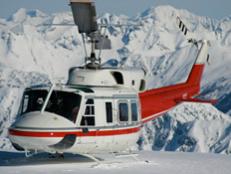
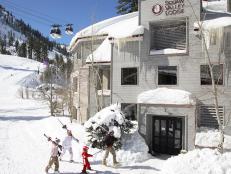
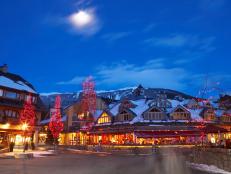
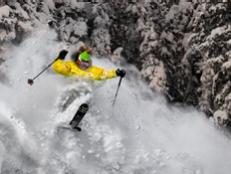
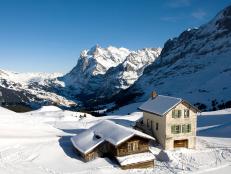
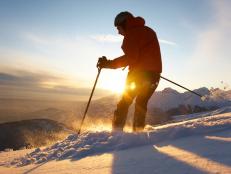
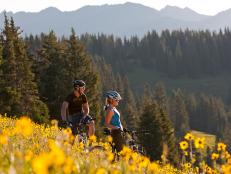


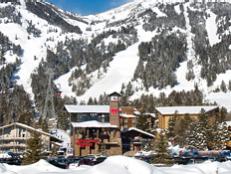






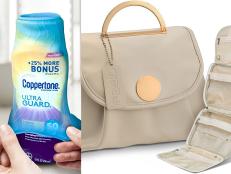
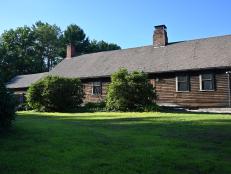

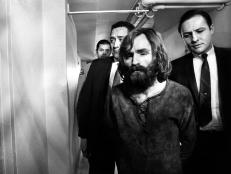
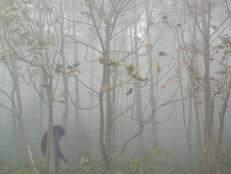






.jpg.rend.hgtvcom.231.174.suffix/1674758726773.jpeg)




